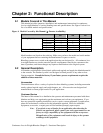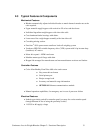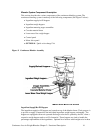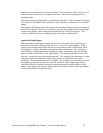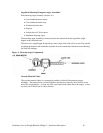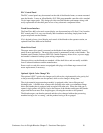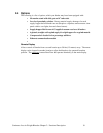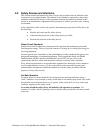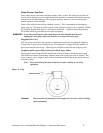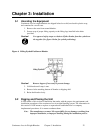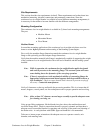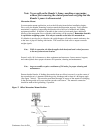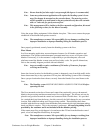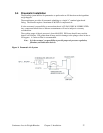Continuous Loss-in-Weight Blenders Chapter 2: Functional Description 20
2-5 Safety Devices and Interlocks
This section includes information on safety devices and procedures that are inherent to the
continuous loss-in-weight blender. This manual is not intended to supersede or alter safety
standards established by the user of this equipment. Instead, the material contained in this
section is recommended to supplement these procedures in order to provide a safer working
environment.
At the completion of this section, the operator and maintenance personnel will be able to do
the following:
• Identify and locate specific safety devices.
• Understand the proper use of the safety devices provided.
• Describe the function of the safety device.
Safety Circuit Standards
Safety circuits used in industrial systems protect the operator and maintenance personnel
from dangerous energy. They also provide a means of locking out or isolating the energy for
servicing equipment.
Various agencies have contributed to the establishment of safety standards that apply to the
design and manufacture of automated equipment. The Occupational Safety and Health
Administration (OSHA) and the Joint Industrial council (JIC) are just a few of the
organizations that have joined with the plastics industry to develop safety standards.
Every effort has been made to incorporate these standards into the design of the continuous
loss-in-weight blender; however, it is the responsibility of the personnel operating and
maintaining the equipment to familiarize themselves with the safety procedures and the
proper use of any safety devices.
Fail Safe Operation
If a safety device or circuit should fail, the design must be such that the failure causes a
“Safe” condition. As an example, a safety switch must be a normally open switch. The switch
must be held closed with the device it is to protect. If the switch fails, it will go to the open
condition, tripping out the safety circuit.
At no time should the safety device fail and allow the operation to continue. For
example, if a safety switch is guarding a motor, and the safety switch fails, the motor should
not be run.



